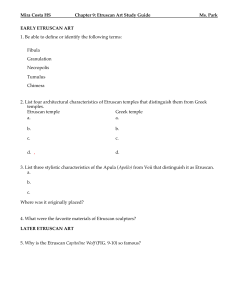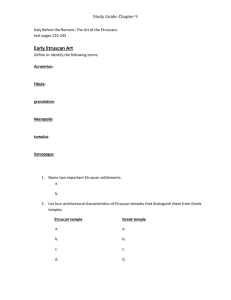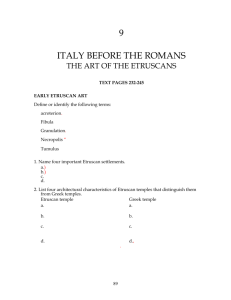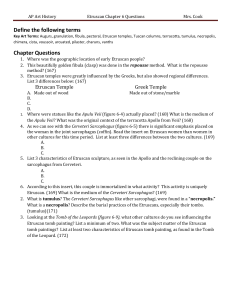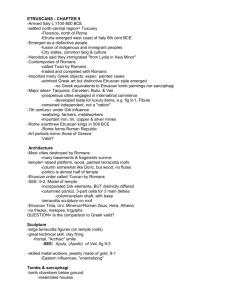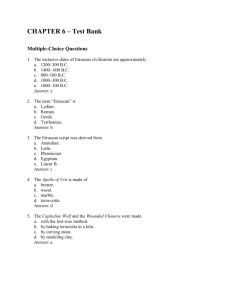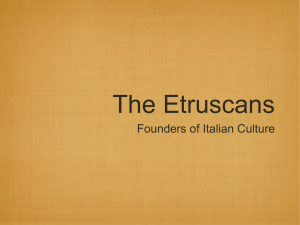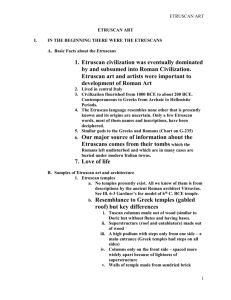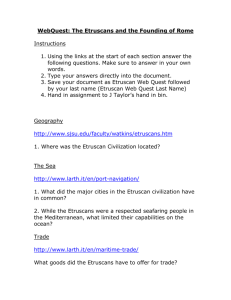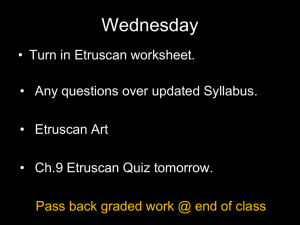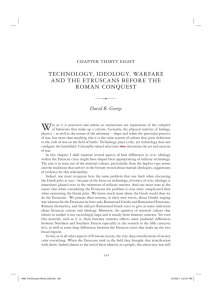Chapter 9 Study Guide
advertisement
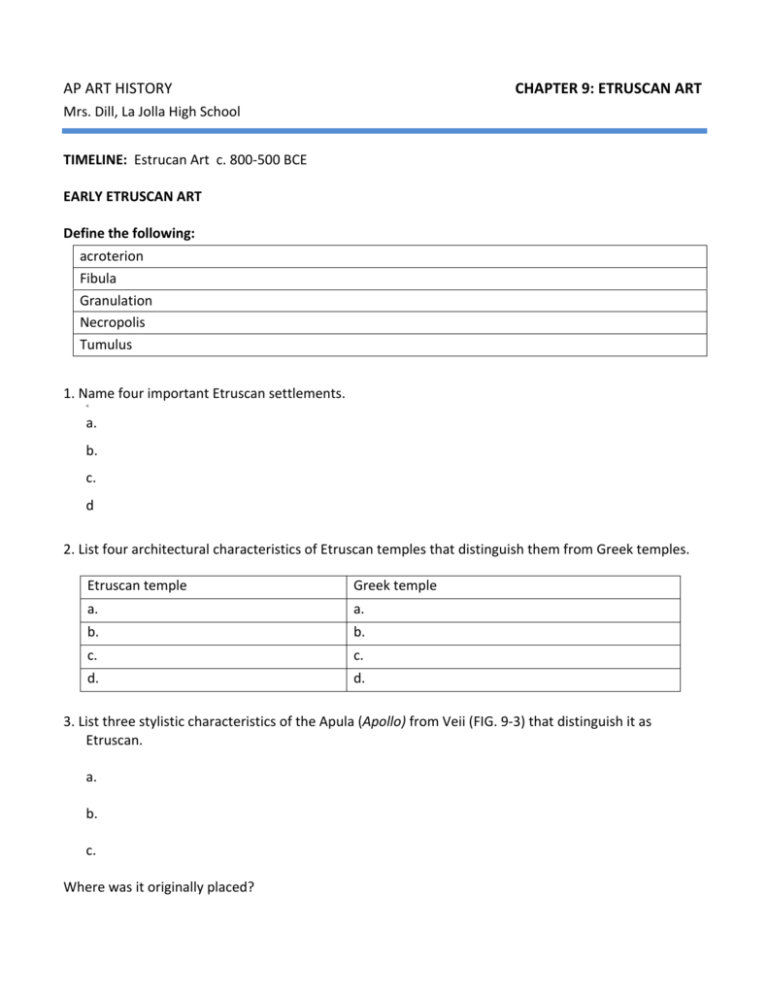
AP ART HISTORY CHAPTER 9: ETRUSCAN ART Mrs. Dill, La Jolla High School TIMELINE: Estrucan Art c. 800-­‐500 BCE EARLY ETRUSCAN ART Define the following: acroterion Fibula Granulation Necropolis Tumulus 1. Name four important Etruscan settlements. < a. b. c. d 2. List four architectural characteristics of Etruscan temples that distinguish them from Greek temples. Etruscan temple Greek temple a. a. b. b. c. c. d. d. 3. List three stylistic characteristics of the Apula (Apollo) from Veii (FIG. 9-­‐3) that distinguish it as Etruscan. a. b. c. Where was it originally placed? 4. What were the favorite materials of Etruscan sculptors? LATER ETRUSCAN ART Define or identify the following terms and understand what they mean for understanding Etruscan art: arcuated gateway. Chimera Cista Voussoir 1. Why is the Etruscan Capitoline Wolf (FIG. 9-­‐11) so famous? 2. Describe the medium and technique used for decorating The Ficoroni Cist (FIG. 9-­‐13). 3. In what way is the sarcophagus of Lars Pulena (FIG. 9-­‐15) different from that of the reclining couple shown in FIG 9-­‐5? How might the subject on the reliefs relate to the political situation of the Etruscans in the 2nd c BCE? 4. List two features of the magnificent bronze figure of Aule Matele (FIG. 9-­‐16) that show the influence of the Romans. a. b. DISCUSSION QUESTIONS (pick one) Compare the Apulu (Apollo) from Veii (FIG. 9-­‐4) with the Riace Warrior (FIG. 5-­‐35). Explain how the typical Etruscan features of the former contrast with the typical Greek features of the latter. How do the style, color, subject matter, and mood of an Etruscan fresco (FIG. 9-­‐1) compare with those of a contemporary Greek vase painting (FIG. 5-­‐60)? Compare the Etruscan sarcophagus with the reclining couple on FIG. 9-­‐5 with the Egyptian funerary monument from Gizeh shown on 3-­‐13 and the Greek funerary stelea on 5-­‐57 and 64. What do these monuments say about relationships between people in these societies as well as about their ideas toward death? What do art images tell us about the relative positions of Greek and Etruscan women? Select two examples from each culture to illustrate your argument. _____________________________________________________________________________________ _____________________________________________________________________________________ _____________________________________________________________________________________ _____________________________________________________________________________________ _____________________________________________________________________________________ _____________________________________________________________________________________ _____________________________________________________________________________________ _____________________________________________________________________________________ _____________________________________________________________________________________ _____________________________________________________________________________________ _____________________________________________________________________________________
